Gods & Goddesses
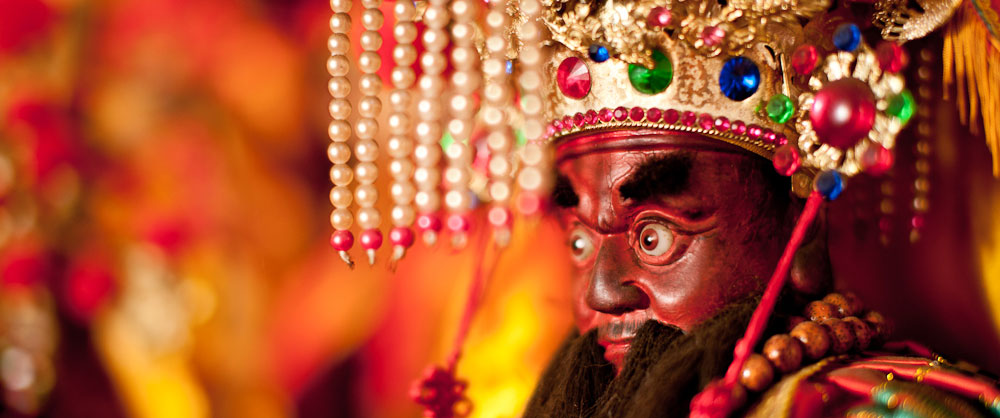
No one knows exactly how many gods and goddesses there are in the Taiwanese pantheon, and not just because they’re so numerous (a figure of ‘around 36,000’ appears in a few books). Among the supernatural entities worshipped in the country are some who might more accurately be thought of as saints, demons, or simply ghosts. Many were once mere mortals on Earth; most (but not all) of those posthumously elevated to godhood lived in the distant past. In at least two temples in Taiwan, sacrifices are made to icons of Chiang Kai-shek, who only died in 1975 and who considered himself a fervent Christian. Almost every god — even those like the Jade Emperor who are believed to have been around for eternity — have birthdays which their devotees celebrate with gusto.
Major categories of folk deities include land gods, town and city gods and Wang Ye. The first two protect specific places — parts of the countryside or small neighbourhoods in the case of land gods, much larger settlements in the case of city gods. The third group comprises hundreds of spirits who, it’s feared, will spread disease and misfortune if not satisfied with frequent offerings; Wang Ye are the centre of attention during Donggang’s remarkable boat-burning celebration.
Mid-ranking gods include Baosheng Dadi, the principal deity in Taipei’s sublime Dalongdong Baoan Temple. Another is Dizangwang, a Buddhist bodhisattva said to be the king of hell. Unlike Christianity’s Satan, rather than revel in the torment of those condemned to punishment in the afterlife, he endeavors to help those who find themselves in purgatory. For this reason, relatives of the recently deceased offer prayers and incense to him in places like Tainan’s Dongyue Temple.
There are other deities which appear in a great many temples, but almost always in a subsidiary role. The fertility goddess Zhusheng Niangniang is one; women pray to her when they’re hoping to conceive, or when they’re already pregnant and hope for her protection, or want a baby of a specific gender (usually male, as traditionally-minded families still prefer sons to daughters). The Old Man Under the Moon is another. Statues of this minor god, who works to connect each person with the man or woman he or she is destined to love, are usually small, and show a smiling, white-bearded man in traditional dress holding a staff. The Old Man icon in Mengjia Longshan Temple is a favourite among Taipei’s twenty- and thirtysomethings.
Mazu
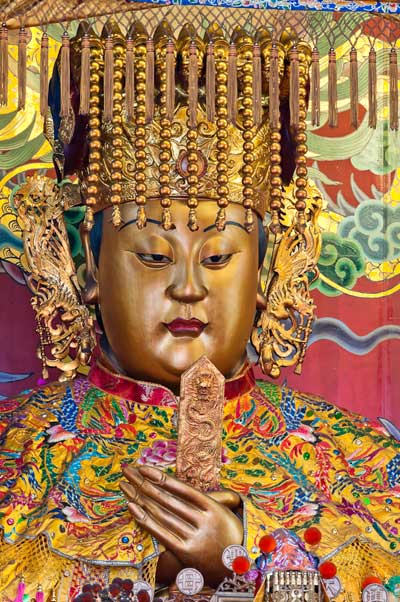 Taiwan’s most popular deity is the sea goddess Mazu (often spelled Matsu). Born in Fujian, the Chinese province nearest Taiwan, in 960AD, she’s said to have achieved a string of miracles before ascending to the heavens at the age of 26. According to one well-known story, while still a teenager she saved her fisherman father and her brothers from an ocean storm by slipping into a trance and plucking them to safety.
Taiwan’s most popular deity is the sea goddess Mazu (often spelled Matsu). Born in Fujian, the Chinese province nearest Taiwan, in 960AD, she’s said to have achieved a string of miracles before ascending to the heavens at the age of 26. According to one well-known story, while still a teenager she saved her fisherman father and her brothers from an ocean storm by slipping into a trance and plucking them to safety.
One reason for her eminence in Taiwan is that settlers leaving Fujian often prayed to her before they set sail, carried icons of her on their ships, and later established shrines to express their gratitude for arriving safely. Many of the oldest Mazu effigies in Taiwanese temples arrived this way during the 17th century.
Across Taiwan and its outlying islands, an estimated 800-plus houses of worship are dedicated to Mazu. Not all of them are near the coast. Many, like the ones in Tainan and Lukang, are called Tianhougong, meaning Queen of Heaven Palace, from the honorific conferred on her in 1839 by China’s emperor. Such shrines invariably include statues of two fearsome-looking demons. Originally evil spirits, they were brought to heel by Mazu and enlisted as her assistants. One is called Shunfenger (meaning ‘ears that hear the wind’) and Qianliyan (‘eyes that see a thousand leagues’). They’re easy to tell apart, because Qianliyan is usually depicted with his hand by his forehead, as if he’s gazing into the distance.
 Guanyin
Guanyin
Guanyin (sometimes spelled Kuanyin) began her divine existence in India as the male bodhisattva Avalokiteshvara, but is usually described in Chinese communities as the Buddhist goddess of mercy. Worshipped by people of Chinese descent — including many who don’t explicitly identify themselves as Buddhist — since the 12th century, her full name can be translated as, ‘she who hears all of mankind’s cries’.
Guanyin is usually depicted by full-figure statues that show a kindly woman holding a scroll or book in her left hand and making a mudra symbol with her right hand. She is the principal deity in both Mengjia Longshan Temple and Lukang’s Longshan Temple.
 Guan Gong
Guan Gong
Like Mazu, Guan Gong (also called Guan Di or Guan Yu) was once an ordinary human. A general executed 1,800 years ago after being defeated in battle, Guan Gong was posthumously revered for his righteousness and loyalty. He’s almost always shown in full form with a red face (albeit sometimes obscured by soot from incense burned in his honour) and a long beard, and he usually carries a heavy halberd in one hand. Worshipped by businessmen, police officers and members of criminal gangs, he’s credited with helping the people of Yanshui in Tainan turn back a plague that had been devastating the population. Among the shrines dedicated to Guan Gong is Tainan’s Martial Rites Temple.
 Jade Emperor
Jade Emperor
Despite being regarded as the creator of the universe, and the being who made the first men and women out of mud, the Jade Emperor (Yuhuang Shangdi in Chinese) isn’t especially prominent in Taiwanese temples. In keeping with his imperial rank, he’s typically depicted as sat on a throne and wearing a flat crown. Shrines where he’s worshipped mark his birthday on the ninth day of the first lunar month.
 Yellow Emperor
Yellow Emperor
According to legend, the Yellow Emperor (Huang Di in Chinese) united proto-Han tribes living around the Yellow River in north China almost 5,000 years ago, thus creating the Chinese race. In addition to being revered as the common ancestor of each and every ethnic Chinese person, various inventions have been ascribed to him: boats, coinage, the compass, the lunar calendar (still used to calculate the dates of traditional festivals) and even the wheel. He apparently like to hang out with intelligent people: His consort is said to have been the first person to master silk farming, while one of his concubines devised chopsticks!

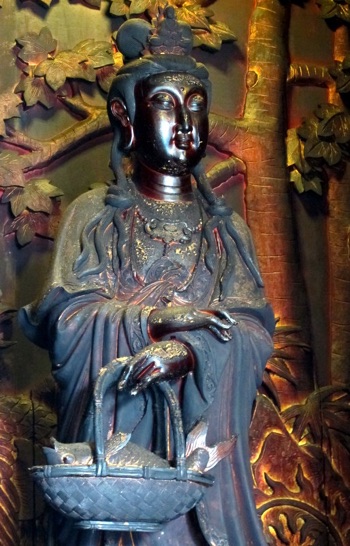 Guanyin
Guanyin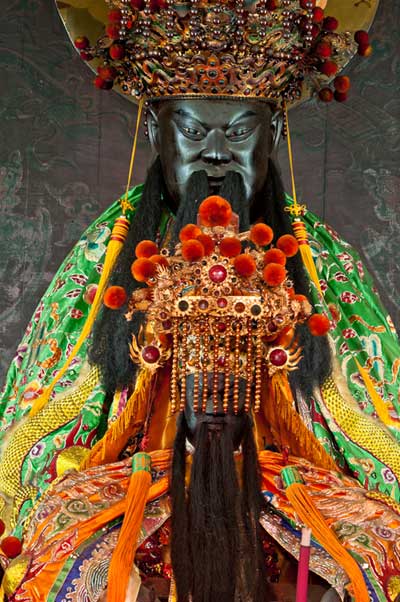 Guan Gong
Guan Gong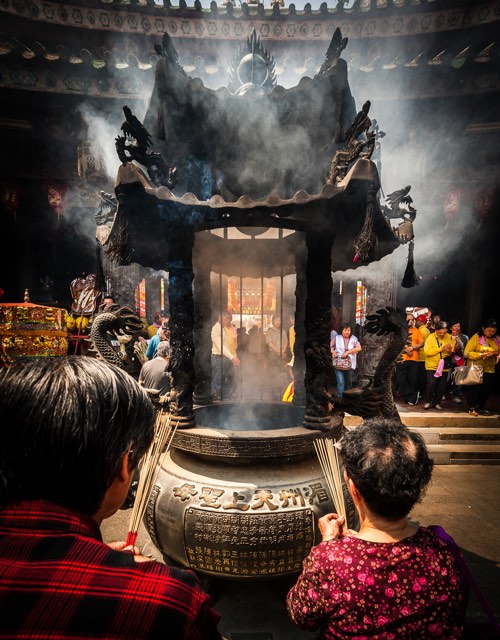 Jade Emperor
Jade Emperor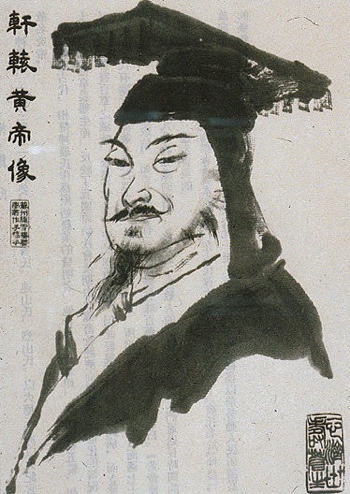 Yellow Emperor
Yellow Emperor